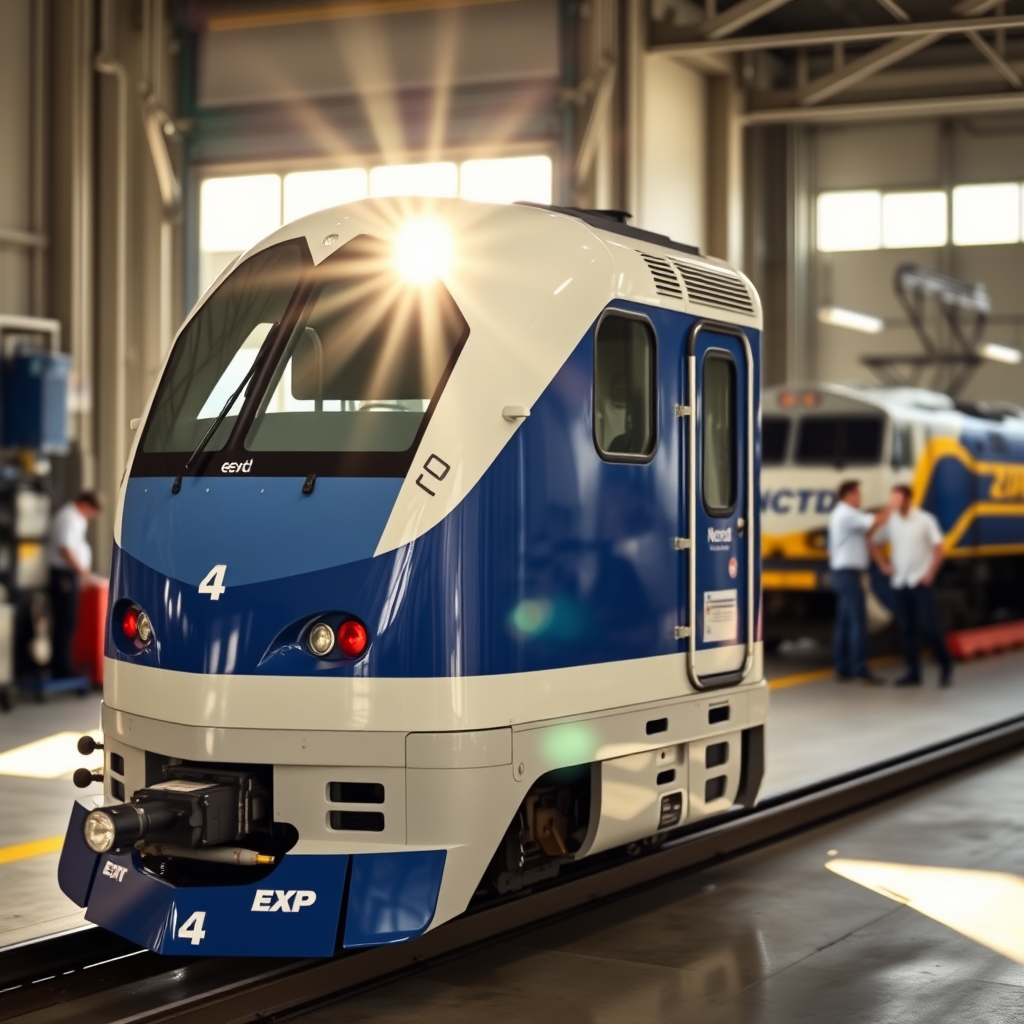NCTD’s Green Revolution: Siemens Charger Locomotives

This article explores the successful acquisition and implementation of four Siemens Charger locomotives by the North County Transit District (NCTD) in San Diego, California, highlighting the crucial role of engineering firm EXP in facilitating this transition. The procurement represents a significant advancement for NCTD’s commitment to sustainable and efficient passenger rail service. We will delve into the technical aspects of the locomotives, the comprehensive support provided by EXP throughout the procurement and implementation phases, and the broader implications for the future of sustainable rail transportation in the region. The acquisition not only modernizes NCTD’s fleet but also showcases the increasing importance of collaboration between transit agencies, engineering firms, and locomotive manufacturers in achieving ambitious sustainability goals within the railway industry. This case study provides valuable insight into the multifaceted processes involved in upgrading rail infrastructure and the benefits of adopting environmentally friendly technologies.
The Siemens Charger Locomotives: A Technological Advancement
The NCTD’s acquisition of four Siemens Charger diesel-electric locomotives marks a substantial upgrade to its existing fleet. These locomotives are designed to meet Tier 4 emission standards (the strictest EPA standards for locomotive emissions), resulting in a remarkable 90% reduction in emissions compared to older Tier 0 models. This significant decrease in emissions directly contributes to improved air quality in the San Diego region, aligning with NCTD’s commitment to environmental sustainability. Beyond emission reduction, the Charger locomotives offer enhanced reliability, improved passenger safety features, and increased accessibility for passengers with disabilities, enhancing the overall quality of the passenger experience.
EXP’s Comprehensive Role in Procurement and Implementation
EXP, an engineering, architecture, design, and consulting firm, played a pivotal role throughout the entire procurement and implementation process. Their responsibilities extended beyond the typical engineering scope, encompassing the development and management of testing and commissioning plans crucial for the safe and efficient integration of the locomotives into revenue service. Crucially, EXP’s contribution included the creation of a comprehensive Quality Plan, Communications Plan, and Risk Management Plan, ensuring a smooth transition and minimizing potential disruptions during the implementation phase. Their continued support during the warranty period, in collaboration with STV (another engineering firm), further underscores their commitment to the project’s long-term success.
Sustainability and the Future of Rail Transportation
The NCTD’s investment in Siemens Charger locomotives represents a powerful statement regarding the future of sustainable rail transportation. The substantial reduction in emissions not only benefits the environment but also aligns with broader societal goals towards greener transportation solutions. The project’s success highlights the importance of investing in modern, efficient rolling stock to minimize environmental impact and improve operational efficiency within the rail industry. This approach can serve as a model for other transit agencies seeking to modernize their fleets and reduce their carbon footprint.
Collaboration and Long-Term Partnerships
The collaborative nature of this project deserves emphasis. The successful integration of the Siemens Charger locomotives resulted from the effective partnership between NCTD, Siemens Mobility (the locomotive manufacturer), EXP (the engineering and consulting firm), and STV (another engineering firm involved in the warranty phase). This collaborative model, characterized by clearly defined roles and responsibilities, ensures project success and efficient resource utilization. The long-term maintenance agreement between NCTD and Siemens Mobility further reinforces the commitment to operational excellence and the sustained performance of the locomotive fleet. The 20-year agreement for maintenance and material management highlights the importance of long-term planning and strategic partnerships for ensuring operational efficiency and minimizing lifecycle costs.
Conclusions
The acquisition and implementation of four Siemens Charger locomotives by the NCTD represent a significant milestone in the advancement of sustainable and efficient rail transportation in San Diego. EXP’s vital role, extending from meticulous planning and testing to ongoing support during the warranty period, showcases the importance of comprehensive engineering expertise in complex infrastructure projects. The project’s success underscores the collaborative spirit required for large-scale rail modernization initiatives, bringing together transit agencies, manufacturers, and engineering firms to achieve common sustainability goals. The Siemens Charger locomotives, with their Tier 4 emission standards delivering a 90% reduction in emissions compared to older models, offer substantial environmental benefits, improving air quality and positioning NCTD as a leader in environmentally conscious transit solutions. The long-term maintenance agreement with Siemens Mobility demonstrates a commitment to continuous operational efficiency and cost-effectiveness. This case study serves as a compelling example for other transit agencies seeking to upgrade their fleets and enhance their commitment to environmental responsibility and the delivery of high-quality passenger rail services. The focus on comprehensive planning, strategic partnerships, and a commitment to environmental sustainability offers a blueprint for future rail modernization projects, balancing technological advancement with a profound dedication to a greener future.





